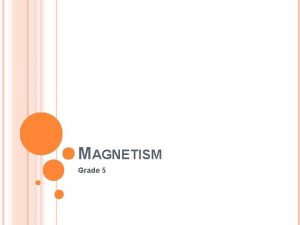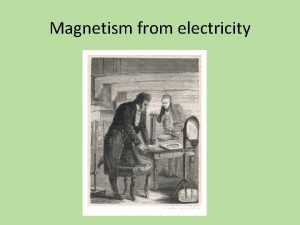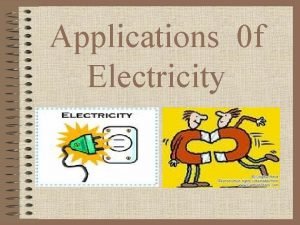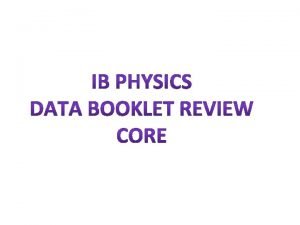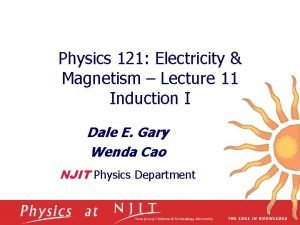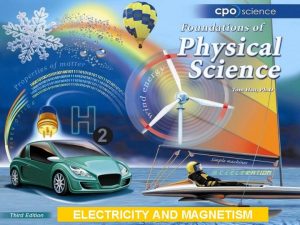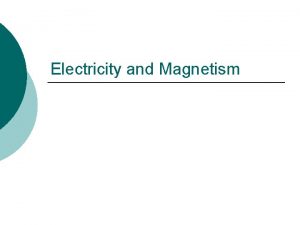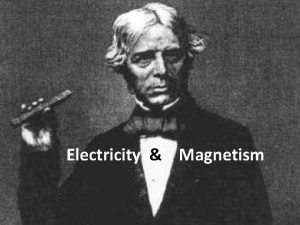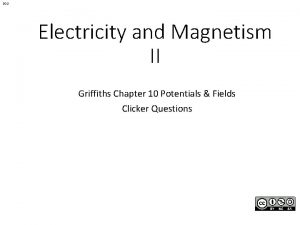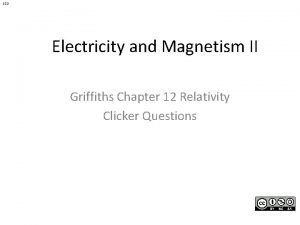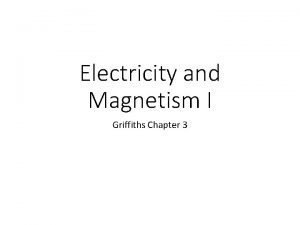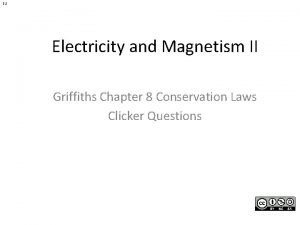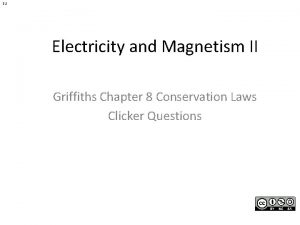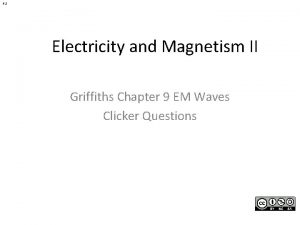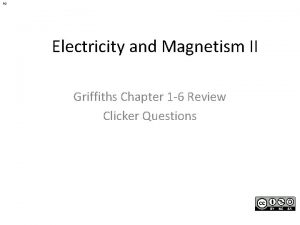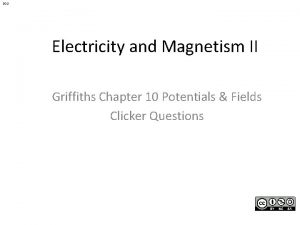11 1 Electricity and Magnetism II Griffiths Chapter

















- Slides: 17

11. 1 Electricity and Magnetism II Griffiths Chapter 11 Radiation Clicker Questions

11. 2 The integrated Poynting flux heading out to infinity is If the E and B fields are static, with localized sources: How do E & B fall off with distance? What does that tell you about the above integral?

11. 3 In order for a localized source (near the origin) to radiate energy off to infinity, this integral must be non-zero. How must E and B fall off with distance r, in order for the source to radiate energy to infinity? Both E and B must fall off as A) 1/r B) 1/r 2 C) 1/r 3/2 D) 1/r 3 E) Something else. Could E and B fall off as 1/r 1/2 from a localized source? A) yes B) no

11. 4 A charge moves in a straight line with constant velocity. Does it radiate? A) Yes, and I can defend my answer B) Yes, but I cannot explain why I believe this C) No, and I can defend my answer D) No, but I cannot explain why I believe this E) It depends on the reference frame of the observer!

11. 5 A neutral infinite current sheet, K, is turned on at t=0, flows in the x-y plane, in the +y direction. It is suddenly turned OFF at t=t 1. Describe E and B everywhere in space! X (No clicker question, just be ready to voice your ideas!) K Y Z -Z -X

11. 6 A neutral infinite current sheet, K, is turned on at t=0, flows in the x-y plane, in the +y direction. It is suddenly turned OFF at t=0. Describe E and B everywhere in space! X B K E, B=0 in here Y -Z Z E -X E, B=0 out here for awhile Front moves at v.

11. 7 A small oscillating dipole has height d, and charge q(t) at the ends. A wire carries the oscillating current back and forth between the two poles. What is I(t), the current in the wire? +q -q =q 0 cosωt

11. 8 You are FAR from a small oscillating dipole, and you want to compute the vector potential: r d What is the leading order approximate expression for A(r, t) ?

11. 9 What is in spherical coordinates?

11. 10 A function of the form represents a. . A) traveling wave moving in the r-hat direction B) traveling wave moving in the q-hat direction C) traveling wave moving in the z-hat direction D) traveling wave moving in some other direction E) Something other than a traveling wave

11. 11 For an oscillating dipole, p=p 0 cos(ωt), we worked out last class (assuming r >> λ >> d) that: To think about (be prepared to discuss): In what ways is it like (and not like) our familiar free-space “traveling plane wave”? Which of the following describes the E field?

11. 12 Total power radiated by a small electric dipole is What is the time averaged power? What is the time averaged intensity at distance “r”?

11. 13 The time averaged Poynting vector (far from a small electric dipole) is approximately: Describe this energy flow in words, pictures, or graph.

11. 14 Recall, we found I = -q 0ω cos(ωt). So what is Irms?

11. 15 x If light scatters from point “x” and heads towards the observer, What color is it likely to be? Is the scattered light polarized? If so, which way?

11. 16 We’re interested in power radiated by a wiggling charge. 1) What physics variables might this power possibly depend on? (Come up with a complete, but not OVERcomplete list) 2) If your list of variables was v 1, v 2, etc…, we’re saying P = v 1 a v 2 b … Look at the SI UNITS of all quantities involved. I claim you should be able to uniquely figure out those powers (a, b, …) ! Try it. Hint: My list of variables is q, a, c, and μo

11. 17 The TOTAL power of an accelerating (non-relativistic) charge is called Larmor’s formula. It depends on c, μ 0, a (acceleration) and q (charge). So I presume that means P = c. A μ 0 B a. C q. D (!? It’s at least a plausible guess…) Figure out the constants A-D in that formula, without using any physics beyond units! (This is dimensional analysis) Note: [P] = Watts = kg m 2/s 3, [μ 0]= N/A 2 = kg m/C 2
 4 forces of nature
4 forces of nature Ib physics topic 5 questions
Ib physics topic 5 questions Electricity and magnetism lecture notes
Electricity and magnetism lecture notes Electricity jeopardy
Electricity jeopardy Sph3u electricity and magnetism
Sph3u electricity and magnetism Relationship between electricity and magnetism
Relationship between electricity and magnetism Induced magnetic moment
Induced magnetic moment Grade 5 electricity and magnetism
Grade 5 electricity and magnetism Electricity and magnetism
Electricity and magnetism Electric fuse and circuit breaker graphic organizer
Electric fuse and circuit breaker graphic organizer Electricity and magnetism
Electricity and magnetism Electricity and magnetism
Electricity and magnetism Electricity and magnetism
Electricity and magnetism Electricity and magnetism vocabulary
Electricity and magnetism vocabulary Static electricity and current electricity
Static electricity and current electricity Static electricity and current electricity
Static electricity and current electricity Electrodynamics
Electrodynamics Moulster and griffiths model
Moulster and griffiths model







